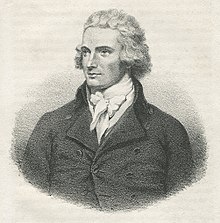
TamLin is a character in a legendary ballad originating from the Scottish Borders. It is also associated with a reel of the same name, also known as the Glasgow Reel. The story revolves around the rescue of Tam Lin by his true love from the Queen of the Fairies. The motif of winning a person by holding him through all forms of transformation is found throughout Europe in folktales.
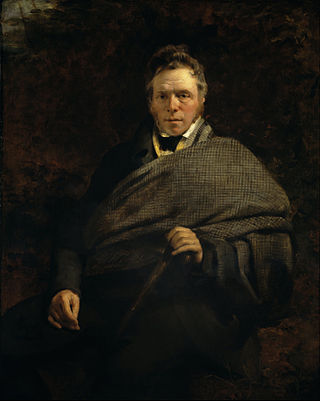
James Hogg was a Scottish poet, novelist and essayist who wrote in both Scots and English. As a young man he worked as a shepherd and farmhand, and was largely self-educated through reading. He was a friend of many of the great writers of his day, including Sir Walter Scott, of whom he later wrote an unauthorised biography. He became widely known as the "Ettrick Shepherd", a nickname under which some of his works were published, and the character name he was given in the widely read series Noctes Ambrosianae, published in Blackwood's Magazine. He is best known today for his novel The Private Memoirs and Confessions of a Justified Sinner. His other works include the long poem The Queen's Wake (1813), his collection of songs Jacobite Relics (1819), and his two novels The Three Perils of Man (1822), and The Three Perils of Woman (1823).

Selkirk is a town and historic royal burgh in the Scottish Borders council district of southeastern Scotland. It lies on the Ettrick Water, a tributary of the River Tweed.

Selkirkshire or the County of Selkirk is a historic county and registration county of Scotland. It borders Peeblesshire to the west, Midlothian to the north, Roxburghshire to the east, and Dumfriesshire to the south. It derives its name from its county town, the royal burgh of Selkirk. The county was historically also known as Ettrick Forest.

The Battle of Philiphaugh was fought on 13 September 1645 during the Wars of the Three Kingdoms near Selkirk in the Scottish Borders. The Royalist army of the Marquis of Montrose was destroyed by the Covenanter army of Sir David Leslie, restoring the power of the Committee of Estates.

The Southern Uplands are the southernmost and least populous of mainland Scotland's three major geographic areas. The term is used both to describe the geographical region and to collectively denote the various ranges of hills and mountains within this region. An overwhelmingly rural and agricultural region, the Southern Uplands are partly forested and contain many areas of open moorland - the hill names in the area are congruent with these characteristics.

St Mary's Loch is the largest natural loch in the Scottish Borders, and is situated on the south side of the A708 road between Selkirk and Moffat, about 72 kilometres (45 mi) south of Edinburgh.

Newark Tower is a large, ruined tower house standing in the grounds of Bowhill House, in the valley of the Yarrow Water three miles west of Selkirk in the Scottish Borders. In addition to the keep, sections of a gatehouse and wall survive. It has been designated a scheduled monument by Historic Environment Scotland.

Ashkirk is a small village on the Ale Water, in the Scottish Borders area of Scotland. It is located just off the A7 road, approximately 6 miles each way between Selkirk to the north and Hawick to the south.
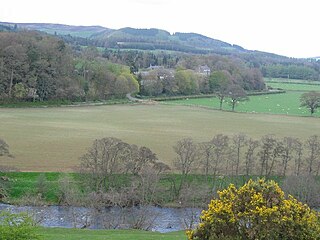
Carterhaugh is a wood and farm near the confluence of the Yarrow Water and the Ettrick Water near Selkirk in the Scottish Borders. This real location shares its name with the fictional setting for the meeting between Tam Lin and Janet in the ballad "Tam Lin". This is commemorated in the name of Tamlane's Well, on the roadside outside Carterhaugh Farm. The link between the location and the ballad is debated.

"The Dowie Dens o Yarrow", also known as "The Braes of Yarrow" or simply "Yarrow", is a Scottish border ballad. It has many variants and it has been printed as a broadside, as well as published in song collections. It is considered to be a folk standard, and many different singers have performed and recorded it.
Broadmeadows is a village in the Scottish Borders area of Scotland, on the A708 near Selkirk.
John Murray, of Philiphaugh, Selkirk, was a Scottish politician who sat in the House of Commons from 1725 to 1753.
Before the Acts of Union 1707, the barons of the shire of Selkirk elected commissioners to represent them in the unicameral Parliament of Scotland and in the Convention of the Estates.
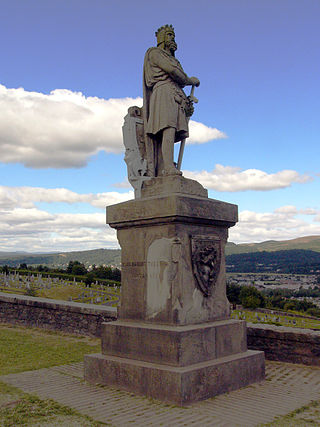
Andrew Currie (1812–1891) was a Scottish sculptor and antiquarian. His most noted works are the statue of James Hogg at St Mary's Loch (1860), the statue of Robert the Bruce on the esplanade at Stirling Castle (1876), and the figures of Edie Ochiltree and Old Mortality on the Scott Monument.

Yarrow is a place and parish in the Scottish Borders area of Scotland and in the former county of Selkirkshire.The name "Yarrow" may derive from the Celtic word garw meaning "rough" or possibly share a derivation with the English name "Jarrow".
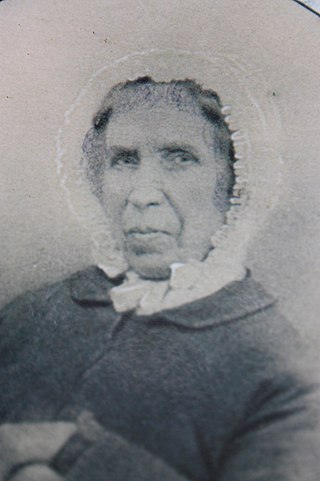
Tibbie Shiel (1783–1878) was a Scottish figure who ran Tibbie Shiel's Inn on St Mary's Loch in the Scottish Borders and was known to many authors and poets, and the subject of numerous literary works.
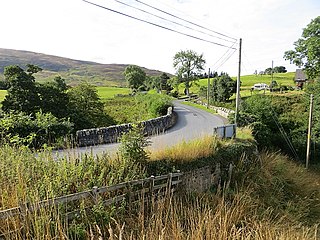
Tinnis Castle or Tynnis Castle was formerly a Scottish tower house or castle at Old Tinnis in the parish of Yarrow, Scottish Borders, or former county of Selkirkshire.
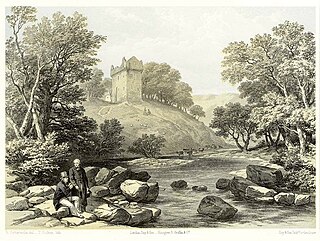
The Yarrow poems are a series of three poems composed by the English Romantic poet William Wordsworth comprising "Yarrow Unvisited" (1803), "Yarrow Visited" (1814) and "Yarrow Revisited" (1831). "Yarrow Unvisited" presents a justification for his failure to take a detour to see the Yarrow Water, a river much celebrated in earlier Scottish verse, during a tour of Scotland with his sister Dorothy; this, according to the poem, allowed him to retain his imagined idea of the river rather than be disappointed by the reality. It was partly written for his friend Walter Scott, whose friendship with him began during this same tour. The second poem records his impressions on finally seeing the Yarrow in company with the poet James Hogg. The third, a tribute to his friend Walter Scott, was inspired by the poets' last visit to the Yarrow the year before Scott's death. All three draw on the rich heritage of earlier poems and ballads set in the Yarrow Valley. "Yarrow Unvisited" is one of Wordsworth's most famous short poems, and has been judged one of his finest. Modern critical evaluation of the two later works has been more mixed.
Margaret Laidlaw m. Hogg (1730-1813) was a tradition-bearer who collected native Scottish ballads from Ettrick in the Scottish Borders.

